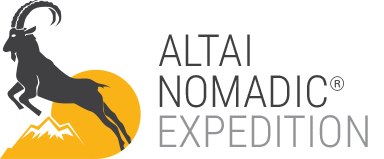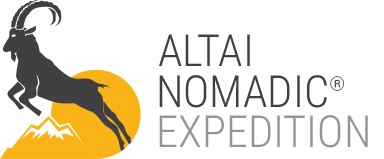BEFORE YOU GO
Mongolia is the ideal place for vacation at any time of year. We offer special packages during all 4 seasons. These packages are tailored to let you experience the unique destinations and activities during the different weather conditions. You may participate in some outdoor activities such as horseback riding, hiking, fishing, ice-fishing, sledding, skiing, skating and snowboarding in the winter.
There are a plenty of large department stores as well as thousands of delightful local shops where you can purchase gifts and souvenirs. As you may all know, Mongolia is extremely famous for its cashmere.
The Altai Nomadic Expedition offers visitors the chance to experience a delightful holiday full of fun and surprises.
Climate
Hot summers and cold winters. Average summer temperature +23C, average winter temperature -23C, average rainfall 200-220 mm per annum, the sun shines for over 200 days a year. Winter lasts from November to late February, spring from March to May, and summer from June to September.
Geography
1.564.100 sq km, 19th and the most sparsely populated independent largest country in the world.
Flora and Fauna
Mongolia is the region of convergence and co-existence of flora which originates both from the Great Siberian Taiga and from the Central Asian Steppe and Desert. 975 species of flowering plant out of the total 3,000 registered species are used for traditional medicine of Mongolia.
The Mongolian unit of currency is the togrog (T), which comes in notes of T5, T10, T20, T50, T100, T500, T1000, T5000, T10.000 and T20000 (T1 notes are basically souvenirs). We used to use also T50 and T100 coins. The highest value note is worth around US$9 so when changing a lot of cash you'll be given a stack of machine-collated bills.
Banks and exchange offices in Ulaanbaatar will change money with relative efficiency. Those in provincial centres have also gotten better, though it's still a good idea to change the bulk of your travel expenditure before leaving the capital.
Other forms of currency except US dollars aren't usually accepted, although the euro is probably second best. Cash offers the best exchange rates and you won't be paying any commission charge, but for security purposes you can also use travellers cheques and debit cards.
Moneychangers who hang around the markets may or may not be legal. They offer the best rates for US dollars and are usually safe, but the risks are obvious. Remember to change all your togrog when leaving the country as its worthless elsewhere.
Most of the banks in Ulaanbaatar have ATM machines. These ATMs accept Visa cards and work most of the time, allowing you to withdraw up to T500.000 per day. Because most of the Golomt Bank branches are open 24 hours. Ordinary ATM cards issued from your bank at home probably won't work; try to get a 'Debit' card linked to your bank account. It should be associated with a credit card company.
The most basic Mongolian eatery is the ubiquitous guanz, or canteen. Guanz are usually found in buildings, gers and can be found in most aimag towns, all over Ulaanbaatar and along major roads where there is some traffic. They usually offer soup, stiutei tsai and either buuz or khuushuur. In the countryside, the ger-guanz is a great way to see the interior of a ger and meet a family, without the lengthy stops and traditions expected with normal visits.
In the countryside most guanz seem to close for dinner (and often lunch as well). In reality, opening hours are often at the whim of staff. The city guanz, which is a good option for budget travellers or people in a hurry, will sometimes masquerade under more alluring names, including tsainii gazar (tea house). Some of the ones on main streets now stay open 24 hours, but the usual hours are 10am to 7pm.
The most restaurants are pretty expensive for the average Mongolian and frequented only during special occasions. Mongolians don't mind blowing an entire week's salary on a good meal, so long as they are enjoying it with friends or family.
Restaurants, usually opens 10am to 10pm daily, are nearly always more hygienic than the guanz and therefore a good choice for children and families. You will probably be assigned an overly attentive waiter or waitress who will polish your silverware to perfection and pour your drinks. In Ulaanbaatar, many restaurants - especially the good ones - will be busy and often full between about 1 pm and 2pm. It pays to get a table before 12.30pm to beat the rush.
Currently, a 30-day tourist visa is easily obtained at any Mongolian consulate, consulate-general or honorary consulate.Follow the following steps and requirements to obtain a Mongolian visa from your nearest Mongolian Embassy:
- One copy of visa application form is required for Mongolian visas
- State clearly travel dates
- A valid passport must be produced
- For a group visa the Consular Section needs only passport of a tour leader and the rest of the clients should provide the following. (nationality, sex, date of birth, passport number, date of issue, date of expire)
- 3 recent passport size photographs should be attached.
- Self-addressed and registered Envelope is required in case visa applied by post.
All visas, except transit are issued by the Embassy. The normal time required for a visa to be processed is one week. But for a transit visa -48 hours without any authorizations.
To get a visa for longer than 30 days, you must be invited or sponsored by a Mongolian, a foreign resident or a Mongolian company, or be part of an organized tour from a Mongolian or foreign travel agency.
If you absolutely cannot get to a Mongolian consulate, it is theoretically possible to get a 30-day tourist visa on arrival at Ulaanbaatar airport. To do this you will need an invitation from a Mongolian travel company. It's best that a representative from this company meets you at the airport on arrival to liaise with visa officials.
It is also theoretically possible to get a visa at the land entry points at Zamyn-Uud and Sukhbaatar train stations, though until this becomes common practice you are better off using this as a last resort only. For both land border visas and on-arrival airport visas you will need US$50 and two passport photos.
Standard tourist visas generally last 30 days from the date of entry and you must enter Mongolia within three months of issue. Visas normally take several days, or even up to two weeks, to issue. If you want your visas quicker, possibly within 24 hours, you will have to pay an "express fee", which is double the normal cost. If you want a tourist visa for longer than 30 days you will need to arrange for a travel agency to invite you. Your sponsor will need to know your full name; date and place of birth; country of citizenship; passport number, date and place of issue and expiry date; your date of arrival and departure; and a general itinerary. They must send your invitation to the Ministry of External Relations in Ulaanbaatar. If accepted, a copy will be sent from the ministry to your designated embassy or consulate, where you fill out a visa application form and hand over your cash. Try to get a copy of your invitation if possible.
If this seems too much hassle, remember that 30-day tourist visas are easily extendible by 30 days in Ulaanbaatar. The only snag is that you'll probably have to return to the capital to do this.
Multiple entry/exit tourist visas are usually only issued to foreign residents who do a lot of travel. Mongolian honorary consulates can issue transit visas and non-extendable tourist visas but only for 14 days from the date of entry. Importantly, they often issue visas without requiring a sponsor or invitation. However, these visas are for entry only; they cannot issue normal entry/exit visas, so you will have to spend some of your precious time in Ulaanbaatar arranging an exit visa from the ministry.
The visa lasts 48 hours (sometimes 72 hours) from the date of entry. This will only allow you to get off the Trans-Mongolian train for a very short time before catching another train to Russia or China. A single entry/exit transit visa cannot be extended. You will need to show the train or plane ticket and a visa for the next country (Russia or China)
If you have a 30-day tourist visa you can extend it by another 30 days. If you are lucky and can rustle up an invitation letter you can theoretically extend it by a second 30 days, but this can be difficult. For extensions, go to the Ministry of External Relations, on Enkh Taivny Orgon Choloo; it is the gray building just south of Sukhbaatar Square. The consular department, where you will have to wrestle with the visa people, is at the back (enter from the southern door). The office is open weekdays from 9.30 am to noon.
You should apply for an extension about a week before your visa expires. It officially costs US$15 for the first seven days and a further US$2 per day for a maximum of 30 days (which therefore costs a total of US$61). You will need a passport-sized photo. It should take two or three days to process.
If you intend to stay in Mongolia for more than 30 days you must register with the police in Ulaanbaatar within 10 days of arriving in the country.
Registration is not difficult, but it can be a confusing process. You must go to the last room on the right on the 3rd floor of the Police Registration Office, officially known as the Citizens Registration and Information Bureau, about 1km north of the corner ofikh Toiruu and Erkhuugiin Gudamj, on the right-hand side of the road. Outside the building is a small sign that reads 'Government Council for Foreign Before you leave Mongolia you need to 'close' your registration, which means going back to the registration office to get a second stamp on your visa. If you don't register, or close your registration you are liable for a fine (theoretically from US$40 to US$75) when you leave the country.
Every traveler must fill in a customs declaration form which should be retained until departure. This allows the free import and re-export of articles intended for personal use for duration of stay. It is prohibited to import and export.
- guns, weapons and ammunitions without special permission
- explosive items
- radioactive substance
- opium, hashish and other narcotics
- pornographic publications
- publications, records, films and drawings against Mongolia
- research materials, paleonthological and archaeological findings, collection of various plants and their seeds, birds, wild and domestic animals, wool, raw skins and hides and furs without permissions of appropriate Mongolian authorities.


